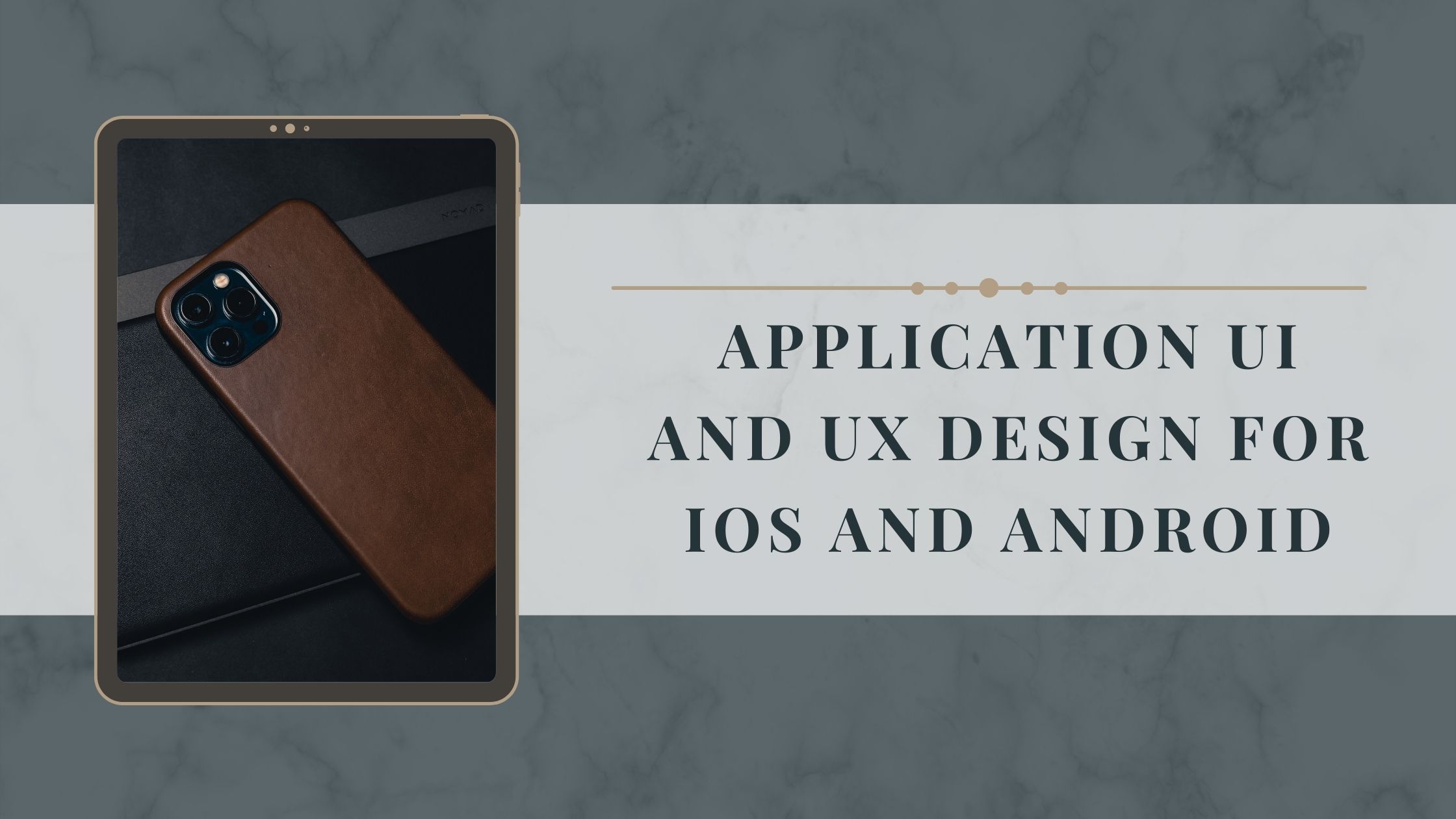
7
SeptemberApplication UI and UX Design for iOS and Android
Have you ever used an app and liked the way the many functions are arranged, colored, laid out, and visually appealing? If so, the software in this circumstance definitely has a high-end quality UI and UX design.
Designing a mobile application is simply the culmination of all the steps and elements that go into creating the program's user interface (UI) and user experience (UX). As a result, it includes information on the color scheme, typeface, layout design, images, widgets, and buttons included in the app. A UI designer must manipulate key elements of mobile apps, whether for Android app design or iOS app design, to provide the user with the most enjoyable look and pleasant interface for engaging with an application's functionality. The creation of the mobile UI and UX model is the responsibility of the UI designer.
Design of iOS and Android apps
It is crucial to keep in mind that mobile UI designs for iOS and Android apps will vary. Overall, the design processes are the same, but the user interface and experience models for the two apps differ significantly from one another. These distinctions are essential to designing apps that, regardless of the operating system being used, are best suited for app operators.
The navigation is the first obvious distinction. All mobile applications have UI designs that differ from the iOS UI, including the home buttons, secondary navigation buttons, and primary navigation buttons. This may be linked to the fact that most Android phones lack the Home-Menu-Back buttons seen at the bottom of the page, whereas the center buttons were present in Apple devices up to the elimination of the iPhone X. An application's back and forth navigation from each page must be created in accordance with the operating system to essentially make it simpler for users.
The screen size is another significant distinction in the design. Although both Android and iOS design their screen structures mostly using an 8dp grid, the size of the icons is very different.
The fonts used by the two applications also differ. Helvetica Neue or San Francisco are the fonts of choice for iOS app design, whereas Roboto is used for Android. It goes without saying that Android users may alter their font, so keep this in mind while creating your application. The typeface being used and the operating system for which the UI design is intended determine how efficiently space is used.
Mobile app design templates
Starting from scratch when creating and developing a mobile user interface design could be a challenge. It is difficult and time-consuming to try to understand the fundamentals of a program, including its typographic capabilities, widgets, control design, and other crucial elements. The process of individually organizing and classifying each page of the application might take weeks or even months. Therefore, using a template is advised for time and resource optimization. Since the fundamental elements and features have already been created, it is simpler to reshape and rebuild them from a template. As a result, the burden has significantly decreased.
Working Geeks makes templates that are most suited to your needs rather than selling generic templates with boring features. The user interface and user experience are optimized by our team of skilled UI designers, using business models to make sure the features are understood correctly and used to their fullest potential.
Mobile app design and development
The third stage of developing a mobile app is designing, which establishes a framework for the features that are written in the backend of your application. That is to say, messing up your application design will absolutely adversely affect the application in production. In order to assure success and save time and money, it is crucial to have a well defined planned process for growth.
Every UI and UX design has the user as its focal point. Avoid including any material that would be redundant or take up unneeded space. The app's language should be created with its target demographic in mind. The ideal course of action is to first create a wireframe that details the particulars of the mobile application and incorporates comments from possible consumers. This is the testing phase in the development stage. The prototype is developed and tested after the wireframe has been approved. Finding design flaws will be made easier with the aid of testing the app's UI and UX prototype.
Mobile app design cost
Mobile application design is an expense, just like every other stage of the app development process. Your mobile application's design cost will vary depending on a number of variables. As opposed to having a bespoke design, the cost will be much lower if you go for a native design. UI and UX principles that are specific to the operating system of the application being built are typically used when creating native designs. For instance, certain features and elements are included in Android apps that are exclusive to Android devices. Going with native design won't make your application less useful, but it will make it seem boring.
